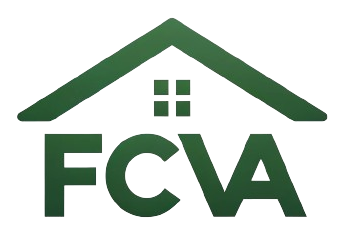Have you ever wondered how rental markets shift and change over time, particularly in a dynamic region like Northern Virginia? Whether you’re a potential renter, a landlord, or simply someone intrigued by real estate trends, understanding the current state of Northern Virginia’s rental market can offer significant insights that affect many aspects of life in this vibrant area.
An Overview of Northern Virginia’s Rental Market
Northern Virginia has consistently been a sought-after area, thanks to its proximity to Washington D.C. and its thriving economy. However, rental markets are influenced by various factors including local demographics, job growth, and even legislation. In this section, let’s take a glance at the broader picture to see where things currently stand.
Economic Factors at Play
Your experience in the rental market can largely depend on the economic conditions of the area. Northern Virginia benefits from its bustling economy, which is driven by technology, government contracting, and education sectors. The presence of major companies and government entities makes this region appealing to both renters and property owners.
With job creation on the rise, the demand for rental properties has surged. Employers like Amazon, which has set up a significant hub in Arlington, have drawn in professionals who are looking for convenient living options. This influx of workers translates into increased competition for rental units, which can directly impact pricing and availability.
Population Trends
Population dynamics also play a crucial role in determining the rental market’s landscape. Northern Virginia’s population has steadily grown, driven by both young professionals and families. You may notice that areas such as Alexandria, Arlington, and Fairfax County have experienced a surge of Millennials and Gen Z renters seeking affordable yet appealing living spaces.
This demographic shift brings diverse preferences and needs, which can shape the type of rental properties that are in high demand. New apartments with modern amenities often attract younger renters, while families might be on the lookout for larger homes with access to good schools and parks.
Rental Prices: What You Need to Know
When it comes to rental markets, price is often a central concern for both renters and landlords. In Northern Virginia, rental prices have shown a complex pattern that reflects shifting demands and economic conditions.
Average Rent Costs
Understanding average rent costs in Northern Virginia can give you a clearer picture of what to expect. According to recent data, rental prices in different areas can vary significantly:
| Area | Average Rent for 1-Bedroom | Average Rent for 2-Bedroom |
|---|---|---|
| Arlington | $2,500 | $3,200 |
| Alexandria | $2,300 | $2,800 |
| Fairfax County | $2,400 | $3,000 |
These figures reveal that urban areas like Arlington tend to be more expensive than suburban locales, reflecting their desirability and proximity to transportation and job centers. Keep an eye on variables that could influence these costs, such as new housing developments or changes in local infrastructure.
Rent Growth Trends
Even more telling than current prices is the trend of rental growth. In the past few years, it has been notable that rental prices have increased, sometimes outpacing wage growth. This can pose challenges for many renters trying to balance housing costs with other financial responsibilities.
Keeping abreast of these trends could help you make informed decisions, whether you’re planning to rent, invest, or consider mortgage options.
What Renters Are Looking For
Understanding what renters want can create a smoother rental experience, whether you’re a landlord or someone searching for a new home.
Key Amenities
For modern renters, amenities can often tip the scales in favor of a particular property. Here are some of the key features many renters value:
- In-Unit Laundry: No one wants to haul their laundry to a communal space.
- Access to Public Transport: Many renters prioritize ease of commuting, particularly to D.C.
- Outdoor Space: Private balconies, patios, or yard areas are becoming increasingly attractive.
- Pet-Friendly Options: With many people owning pets, having the option to rent a pet-friendly space is essential.
The Future Outlook for the Rental Market
While understanding current trends and prices is vital, the future forecast can also help guide your decisions.
Predicted Market Trends
As you consider where the rental market may be headed, take note of certain forecasts indicating that rental growth may stabilize in the coming years. Factors such as potential interest rate hikes and changes in housing policies can influence market dynamics.
- Increased Inventory: With more construction projects underway, additional rental units could lead to market saturation, potentially stabilizing or lowering rent prices.
- Legislative Changes: Local policies concerning rent control and housing development can significantly shape the landscape of the rental market.
Considerations for Future Renters
Keeping an eye on the future can also augment your strategy if you decide to rent. Here are some considerations:
- Timing Your Lease: If rental prices appear likely to rise, locking in a lease sooner rather than later could save you money in the long run.
- Evaluating Your Needs: As life circumstances change, so may your housing requirements. Stay adaptable to different living arrangements; you might find greater satisfaction in a smaller, newer apartment or a co-living space.
The Impact of COVID-19 on the Rental Market
The pandemic created significant shifts in rental markets across the globe, and Northern Virginia was no exception.
Adjustments to Work-from-Home Culture
You may have noticed how the rise of remote work has transformed rental preferences. Many professionals now prioritize larger living spaces or homes that can accommodate a home office. This trend may continue, altering demand in various regions within Northern Virginia.
Changes in Mobility
Additionally, the pandemic increased flexibility in housing arrangements. As some folks left urban areas during lockdowns, it may have led to increased vacancies in core regions. Conversely, suburban areas may have seen a rise in demand as people sought more space.
Short-Term Rentals and Vacancies
Think about short-term rentals in the region. If you’ve had your eye on platforms like Airbnb, you might have noticed a staggering change in their popularity during the pandemic. Many properties that were once used for short-term leases have now switched back to long-term rentals, creating newer opportunities in the long-term rental landscape.
Understanding the Role of Landlords
You might be curious about the role landlords play in this evolving market, particularly as they respond to changes in demand.
Tenant Relations
Building strong relationships with tenants is invaluable. Landlords who invest in communication and transparency often enjoy lower vacancy rates and more stable income. Additionally, accommodating tenant needs, from amenity upgrades to flexible lease options, can create a positive living environment.
Market Adaptation
Effective landlords remain attuned to market fluctuations. You may come across property owners who utilize market data to adjust rent prices, improve property features, or even expand their portfolio. Smart adaptations can drive profitability in both the short and long term.
The Importance of Legal Knowledge
Navigating the legal landscape in rental markets is crucial for both renters and landlords.
Understanding Tenant Rights
As a prospective renter, educating yourself about tenant rights is vital. You should be aware of your rights regarding termination of tenancy, security deposits, and lease agreements. These factors can empower you to advocate for yourself effectively.
Landlord Obligations
Landlords, too, should familiarize themselves with laws governing their responsibilities, including maintenance obligations, eviction procedures, and fair housing regulations. A clear understanding of these factors can impact their ability to maintain compliance and build a successful rental business.
Conclusion: Navigating Northern Virginia’s Rental Market
Understanding Northern Virginia’s rental market can no doubt seem overwhelming, but arming yourself with knowledge gives you a distinct advantage. Economic conditions, population trends, rental prices, and the evolving needs of both renters and landlords collectively shape the landscape of the rental market.
As you move forward—whether shopping for a new home, deciding on investment opportunities, or considering your next steps—keep these insights in mind. Greater awareness enables you to navigate challenges and seize opportunities in a continuously changing environment. You have the power to shape your journey in the Northern Virginia rental market, so stay informed and proactive!



